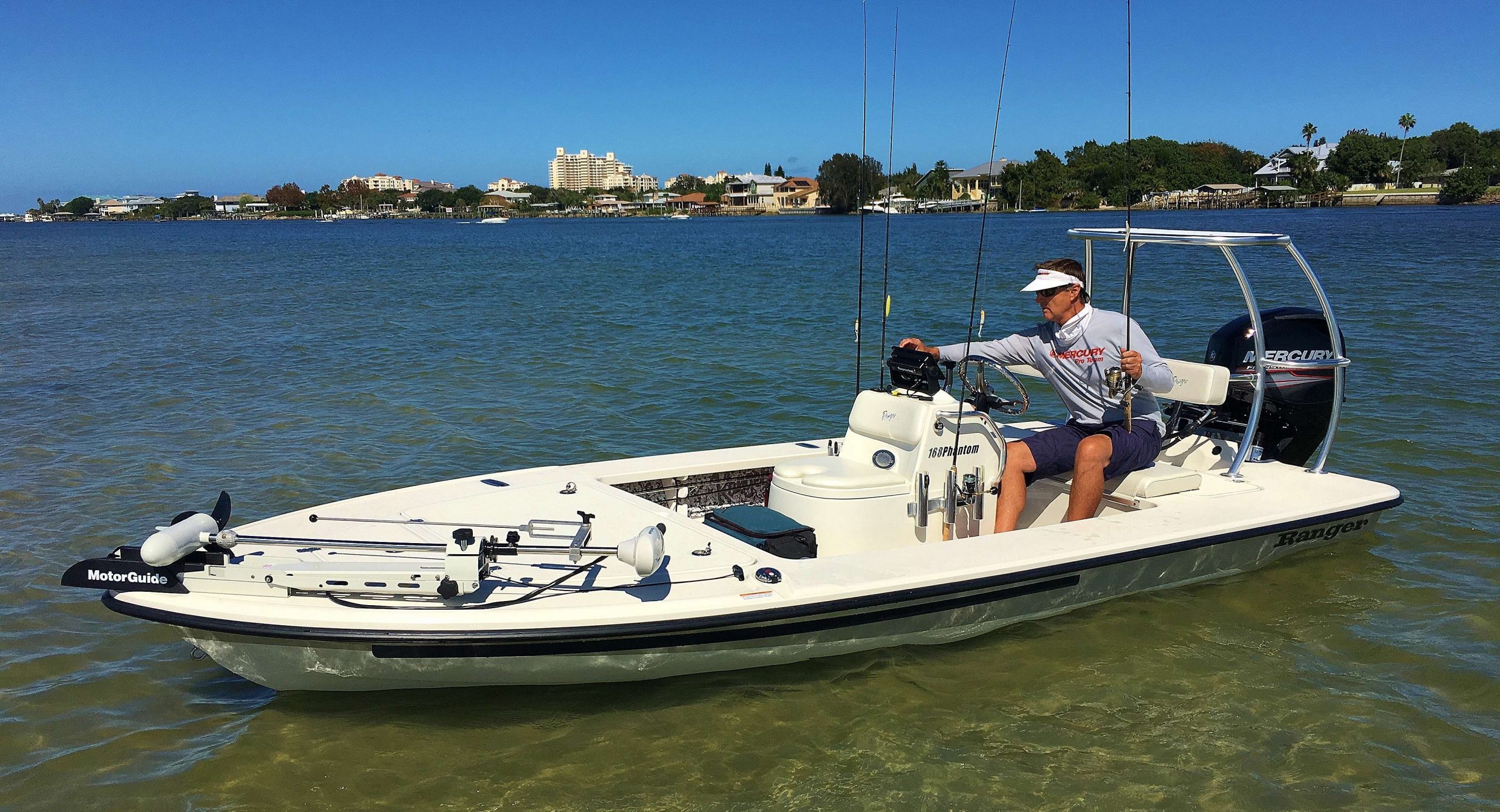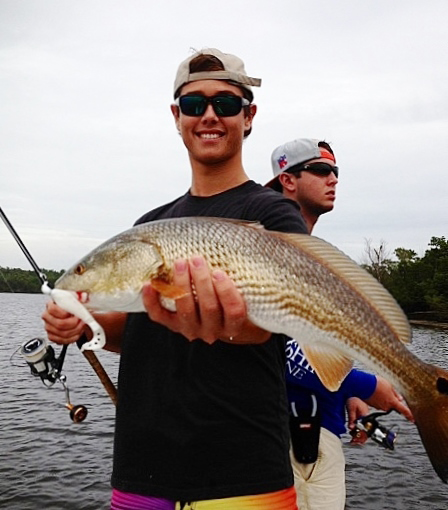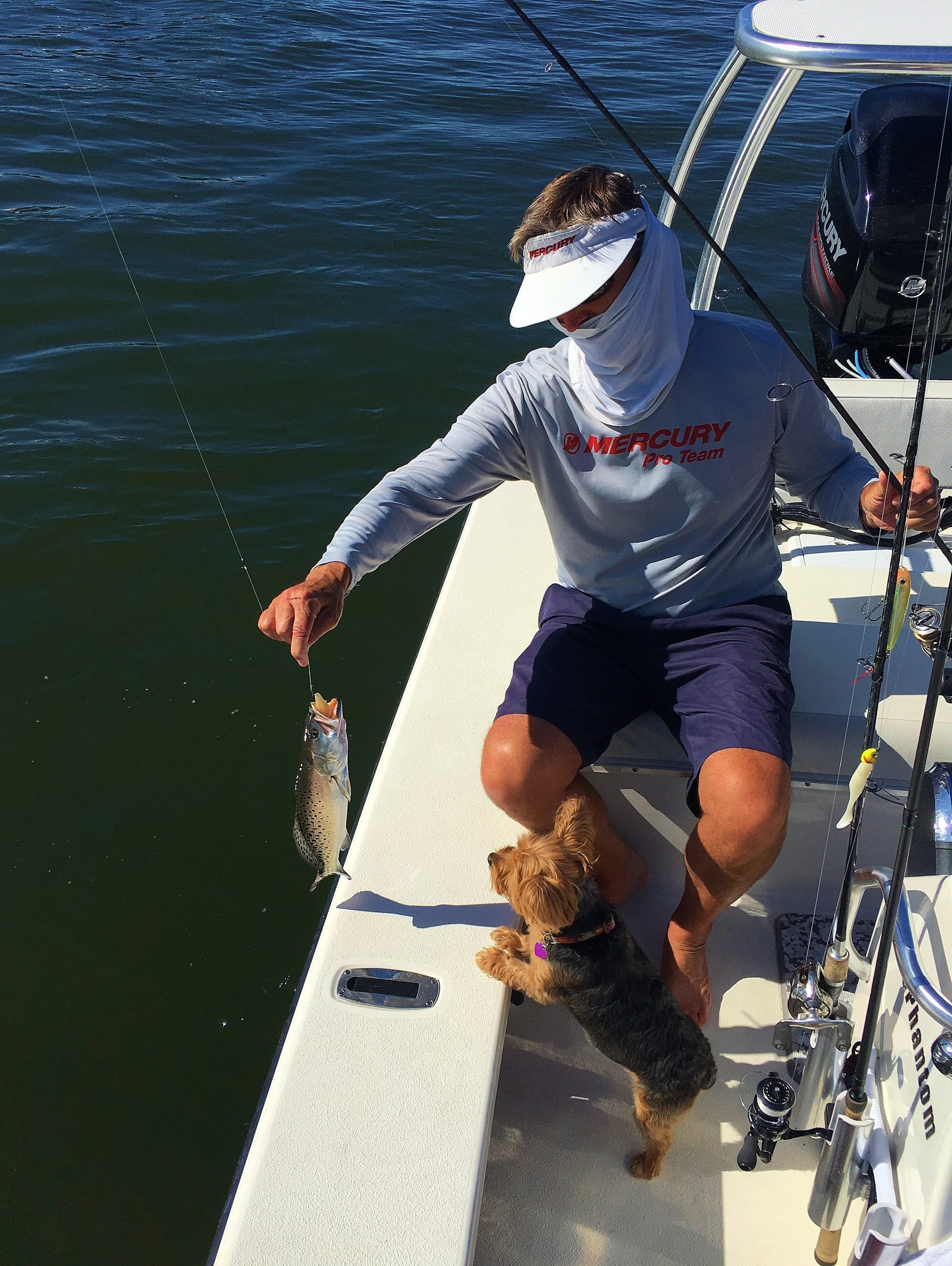
When I’m not on the road competing in the Bassmaster Elite Series, there’s a good chance you’ll find me chasing fish along Florida’s coastline. It’s one of my favorite pastimes.
There’s something about fishing in crystal clear, super shallow water, trying to fool fish afraid of their own shadows. It’s the purest form of sight-fishing there is, and I love it!
Growing up in Florida, I got an early introduction to coastal fishing. My grandfather and uncle were both saltwater anglers, and my dad owned a fish market in Miami, which provided opportunities to go with the commercial fishermen who supplied his store. I went every chance I could get.
Passing the baton
Now that I have two sons, I share the experience with them. Like me, they love fishing in general — but if asked which they prefer, they would choose inshore saltwater, hands down.
Doing it right requires some specialized equipment, but, for the most part, bass tackle works perfectly for the species we pursue — including redfish, trout, tarpon, snook, flounder and tripletail. Generally, we’re throwing topwaters, jerkbaits, swimbaits and soft-plastics twitch baits, just like those used for black bass, and the fish really respond to them.
I tell my sons it’s more about stealth and presentation than lure selection. Do things right and you’ll catch a lot of the fish you see … but not always. And that’s what makes it so challenging — especially when you add variables like wind, current, varying light levels, etc.
My boys are still learning, but both catch more than their share. And to be honest, I’d rather watch them score than fish myself. It’s more rewarding.

Our toy boat
To access shallow coastal flats, you need the right boat — one that’s lightweight with minimal draft. A johnboat will work fine, but if it’s within your budget, a saltwater skiff is much better.
We fish out of a Ranger Phantom, which is 17 feet in length with a lot of beam. The added stability comes in handy, too, especially with two 200-pound gorillas aboard! The skiff’s powered with a Mercury 60hp 4-stroke outboard, which is reliable and fuel efficient, and more than adequate for our needs.
On the bow, I installed a MotorGuide Great White 24-volt trolling motor that delivers 80 pounds of thrust. That’s essential when you’re trying to cover massive amounts of water and dealing with strong tides. For juice, I chose lithium-ion batteries made by The Lithium Battery Company. Although pricey, they’re lightweight and powerful, and three take up little more space than a single Group 34 lead-core battery.
To find our way around, I installed a Raymarine eS7 GPS/graph, complete with Navionics latest navigational charts. This combo is not only dependable, it allows me to view satellite imagery and mapping side-by-side in split-screen mode — which means I see depth contours as well as an aerial view of the habitat I’m trying to access. And in remote places like the Everglades, that’s invaluable!

Fishing for fun
We fish all over the place. Not just in the Everglades, but up and down both coasts. By moving around a lot, we rarely see the same water twice, and that adds to the adventure … which, in turn, helps to build lasting memories.
We’re not alone in this pursuit either. Numerous other touring pros enjoy fishing in saltwater. Guys like Jeff Kriet, Terry Scroggins, Cliff Prince and Kelly Jordon — all spend considerable time in the brine. It’s a great release from the pressures of competition.
So if you want to add some flavor to your angling experience, try mixing it up. There are countless rivers and streams feeding our nation’s estuaries, and in many cases they can be accessed with a bass boat.

